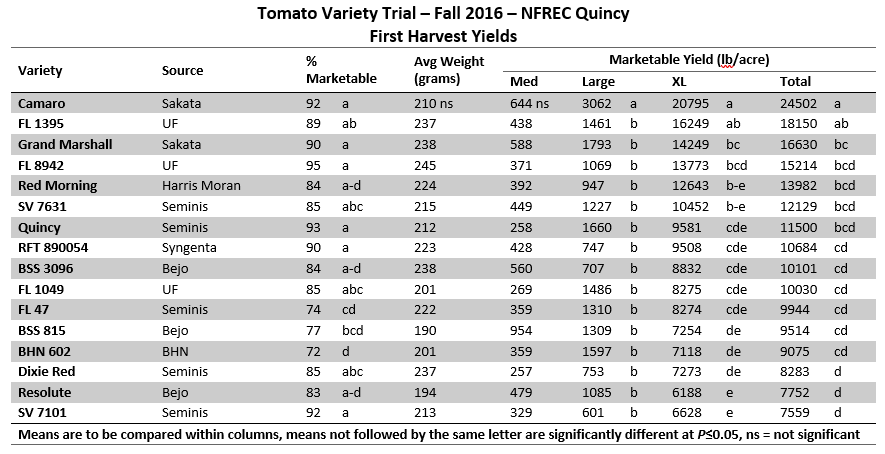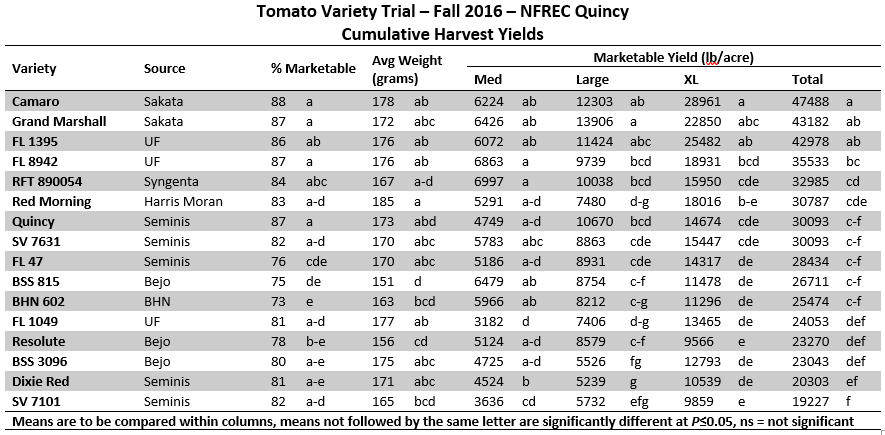Josh Freeman, UF/IFAS Horticultural Specialist
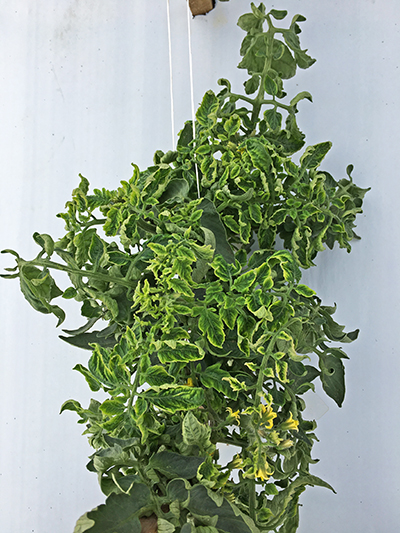
Tomato Yellow Leaf Curl (TYLC) resulted in catastrophic losses across the Panhandle and South Georgia in nearly all vegetable crops. Credit: Josh Freeman, UF/IFAS
Though we haven’t started picking the spring 2019 crop, it is already time to start thinking about the fall crop, because soon it will be time to order seed. Based on current information, whitefly numbers are generally very low. This doesn’t mean that they can’t greatly increase before the end of the fall season, but as of now, things look positive. That being said, think about the fall of 2017 and how bad whitefly populations where, and how much Tomato Yellow Leaf Curl (TYLC) was present in our area (Figure 1). This combination resulted in catastrophic losses across the Panhandle and South Georgia in nearly all vegetable crops. With this in mind I prefer the philosophy of “prepare for the worst and hope for the best.”
With respect to tomato varieties, this means plant TYLC resistant varieties. In the past, most TYLC resistant varieties were not well adapted to the Panhandle, and often performed poorly compared to industry standards. The lack of performance paired with the uncertainty of disease pressure often led producers to take the risk of planting susceptible varieties. Fortunately over the last 10 years tomato breeders have put considerable effort into selecting tomato varieties with resistance to TYLC that are adapted to North Florida and South Georgia. We conduct tomato variety trials annually at the North Florida Research and Education Center where we compare new varieties to industry standards in replicated experiments. We grow these plants using commercial methods (Figure 2), and harvest and grade fruit to determine yield potential and also evaluate disease resistance. Often these varieties have not been released for commercial sale so we are able to look at them for several seasons before they are available to growers.
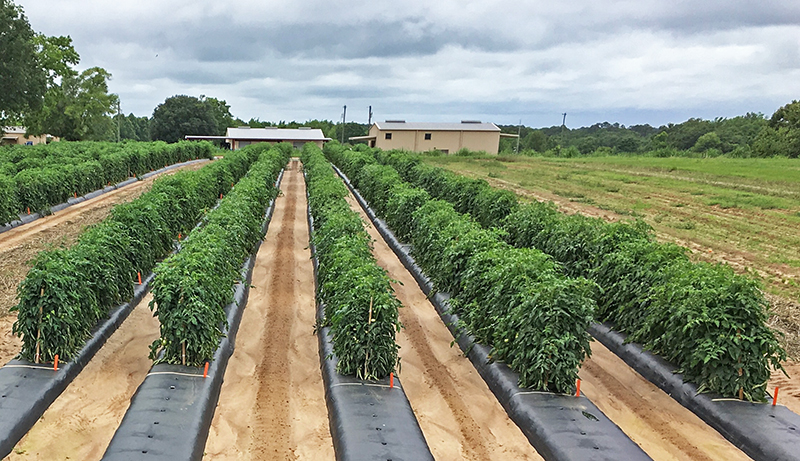
Researchers annually conduct tomato variety trials at the North Florida Research and Education Center to compare new varieties using commercial methods to evaluate yield potential and disease resistance. Credit: Josh Freeman, UF/IFAS
Figures 3 and 4 are results from tomato variety trials during fall 2016 and 2017. TYLC incidence was high in both years, but appeared much earlier in 2017. Unfortunately, the 2018 fall variety trial was compromised by Hurricane Michael. ‘Quincy’ and ‘SV 7631’ are varieties that are considered industry standards for North Florida, and can be viewed for comparisons in these reports. Varieties of note in these two trials are ‘Camaro’, ‘Grand Marshall’, ‘BSS 3040’, and ‘XTM 2263’ (which is now named Red Snapper). All of these varieties have resistance to TYLC and have performed well in our trials, especially when there is TYLC disease pressure.
Figure 3 2017 Variety Trial Data
–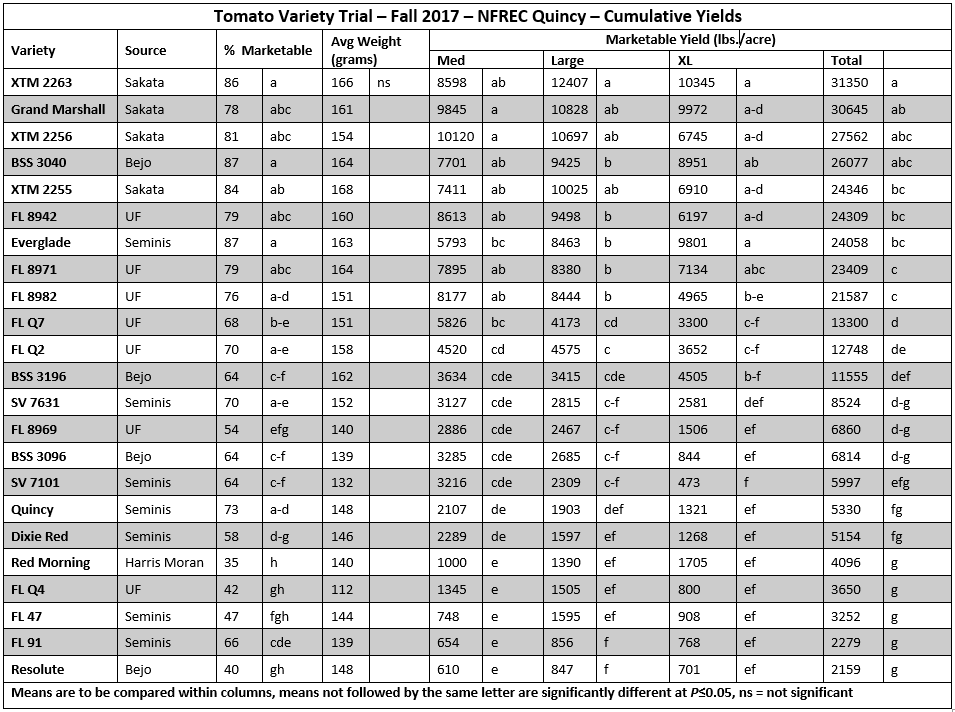 –
–
Figure 4 2016 Variety Trial Data
Growers in the North Florida and South Georgia now have well adapted varieties that are resistant to TYLC, and no longer need to compromise yield potential for disease resistance. For this reason I recommend planting TYLC resistant varieties this fall in our area. In my opinion, the risk of loss to TYLC is too great to plant susceptible varieties.
*This article is not meant so serve as an endorsement for any variety listed. Seed producers are asked to participate, and we evaluate material that is submitted and industry standards. There are other varieties with TYLC resistance that may perform as well or better than those listed. The decision of which variety to plant is ultimately up to the individual producer, and many other factors contribute to this decision including fruit size, shape, and fruit durability.
- NFREC Faculty Tribute to Arnie Forrester - February 11, 2022
- Tomato Varieties for 2022 - January 28, 2022
- Pumpkin Production in North Florida - July 30, 2021

